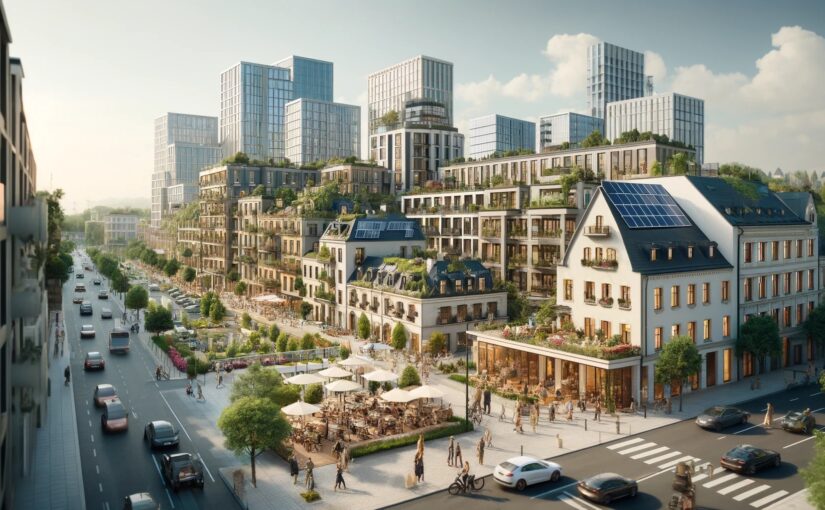As we venture deeper into 2024, Europe’s Real Estate is standing at the crossroads of uncertainty and opportunity. Against a backdrop of economic tremors, the real estate community is eyeing a cautiously optimistic horizon. Here’s a detailed exploration of the key trends that are shaping the market this year, giving investors, agents, and stakeholders a roadmap through this complex landscape.
1. Europe’s Real Estate Market Uncertainties
The European real estate market continues to navigate through high economic tides. With inflation and interest rates causing ripples across the board, sectors promising recession-proof stability, such as decarbonization-aligned properties and tech-oriented spaces, are gaining traction. This nuanced approach is crucial in a market where geopolitical pressures are as influential as economic fundamentals (PwC).
2. The Office Sector: Adapting to New Normals
The transformation in work dynamics has left a clear imprint on office spaces across Europe. This is primarily due to the shift towards hybrid and remote working models. Cities are seeing a polarization in office space demand, whereas areas with outdated facilities face rising vacancies. This shift underscores a deeper reevaluation of space requirements and investment priorities (abrdn) (Knight Frank) as well as a search for more independent living.
3. Logistics: The Steady Contender
Despite a slowdown in growth post-pandemic, the logistics sector remains robust, driven by a sustained demand for high-quality, energy-efficient spaces. This segment of the market highlights the ongoing adjustments in supply chain logistics and e-commerce impacts, reflecting broader economic trends and their implications on real estate (Knight Frank) (BNP Paribas Real Estate).
4. Investment Dynamics: Opportunities Amidst Challenges
With overall investment activity taking a hit, the landscape is ripe with opportunities for discerning investors. Niche markets and quality assets are seeing interest. This suggests a strategic shift towards properties that offer stable returns and growth potential. This pivot is crucial in a market that’s realigning its investment approach to adapt to the new economic realities (BNP Paribas Real Estate) (CBRE).
5. Prospects of Recovery and Resilience
As the market recalibrates, signs of recovery are emerging, fueled by stabilizing debt costs and a strategic repositioning by investors. This phase is likely to usher in a wave of renewed activity. This is especially true for underpriced assets that are well-positioned to benefit from economic recovery. The focus on fundamentals, alongside strategic investments in resilient sectors like residential and logistics, is set to define the trajectory for the latter half of the decade (DWS Investors).
For real estate investors, understanding these trends is key to navigating the complexities of Europe’s Real Estate market. So, by keeping a close eye on these developments, you can better position yourself. You will be ready to face the real estate landscape that is as challenging as it is ripe with opportunities.
As we continue to monitor these trends, the pulse of the market suggests a cautious yet forward-looking approach. It ensures that resilience and adaptability remain at the forefront of strategic planning in real estate investment.
For a deeper dive into these insights, please explore more detailed discussions through the comprehensive reports provided by sources like PwC, abrdn, and BNP Paribas Real Estate.
